Almost all of us have to deal with the symptoms of helminthiasis. These parasites have coexisted with humans for so long that Hippocrates himself mentioned them in his writings. According to WHO statistics, currently on Earth more than 5 billion people are affected by helminths.
The pharmacological industry regularly produces modern products designed to neutralize parasites in the human body, folk remedies for the treatment of helminths, complements to traditional treatment, as well. without losing their relevance.
About worms
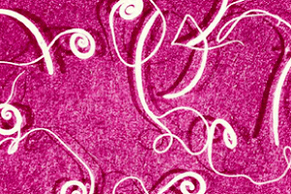
There are about 250 species of parasites that live in human tissues and organs. All of them are divided into two classes:
- flatworms (nematodes);
- roundworms (cestodia and flukes).
Their sizes range from a few millimeters to 10-12 m. Parasites mature sexually very quickly, after which they are capable of laying 10 to one hundred thousand eggs per day.
These eggs persist for a long time, even under the most unfavorable conditions. Types of organisms affected by parasites, according to their stage of development:
- the final host, in which the helminth can develop into puberty;
- intermediate host, where the helminths live to one of their developmental stages.
In the body of the final host, the parasite can go through a full development cycle many times and live there for several decades. For different types of parasites, a person can be both a final host and an intermediate host, just as they can be mollusks, fish, and carnivores. According to the type of circadian cycle, parasitic infections are classified as:
- biological helminths - the development of helminths takes place in organisms of various types;
- geohelminthiases - helminth eggs spend part of their development cycle in the soil, with no intermediate host.
How does parasitic infestation work?
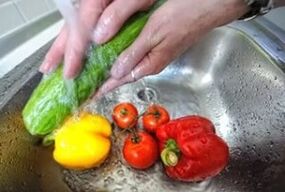
The ways in which helminths enter the human body are varied, depending on social characteristics, natural factors, climate and dietary preferences. The main ways of infection with helminths:
- Through dirty hands, contaminated water, poorly prepared food.
- When inhaling dust particles containing worm eggs;
- Through the skin;
- After being bitten by a mosquito as an intermediate host (Wuchereria bancrofti);
- When eating seafood, meat, fish infected with bacteria (fluke).
Nutritional characteristics of some northern ethnic groups show the use of raw fish and light salt as food. In this population, the prevalence of trichinosis and echinococcosis is high.
What organs are affected by helminthiasis?

Defeat by helminths can be localized to many organs and tissues. The locomotion of helminths depends on its stage of development, so the same worm at different stages of existence can parasitize different parts of the intestine. Organs affected by helminthiasis:
- Large intestine - roundworms, pinworms;
- Papaya - Strongyloides stercoralis;
- lymphatic,
- Lung family - Paragonimidae;
- Subcutaneous tissue - Migratory larvae.
- The helminths parasitize the hollow organs and tissues of the human body.
Depending on the location of the parasite, helminths are divided into types:
- tissue (echinococcosis, cysticercosis);
- translucent (ascariasis, filariasis, ascariasis).
Some species of helminths at the larval stage transform the tissues of the human body, forming capsules or seeds around them (trichinella, toxocara). There is a type of worm that travels in the larval stage and under the skin of a person, and in the tissues of the person's organs (larval worms).
Their temporary stay in the human body comes in both visceral and dermal forms, for which humans are the intermediate host.
Clinical manifestations of helminthiasis
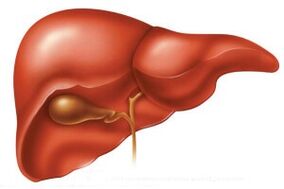
Like many other infections, helminthiasis goes through two stages of development: acute and chronic. Their duration:
- acute phase - from 2-3 weeks to several months;
- chronic phase - from 2-3 months to several years.
Despite the diversity of types of helminths and their localization, the symptoms of the acute phase have common manifestations - that is, allergic symptoms and a toxic effect on the human body:
- slight increase in temperature;
- muscle pain,
- dermatitis,
- limb edema,
- enlarged lymph nodes,
- undigested,
- enlarged spleen and liver,
- Central nervous system damage.
Laboratory blood tests show a change in its formula - eosinophilia and a significant increase in the number of leukocytes are diagnosed. The transition of helminthiasis to the chronic stage marked by symptoms depends on which organs are affected by the parasites, the stage of development of the worms, and their number and variety. In the chronic stage of helminthiasis, the following symptoms are diagnosed:
- indigestion and intestinal pain,
- bowel obstruction,
- colitis in the form of hemorrhagic
- anemia,
- avitaminosis,
- strong weight loss
- obstructive jaundice, hepatitis (with liver damage),
- loss of some central nervous system function (with localization of the parasite in the brain),
- inflammatory diseases of the pelvic organs (when the pinworm moves into the vagina),
- stomach and intestinal ulcers (with chronic strongyloidiasis),
- damage to muscle tissue, formation of granulomas in the capillaries of the brain (with severe trichiasis),
- damage to the lymphatic system (when infected with roundworms).
With echinococci, not only does the liver cyst form, but the parasite can damage bone tissue. This makes the bones brittle and poses an additional risk of fracture. The defeat of the human body by the larvae of the repeat Dirofilaria occurs in the form of a subcutaneous nodule containing the parasite. This node can move according to the thickness of the skin and mucous membranes.
Analyzing the symptoms of helminthiasis, one can be sure that there is no stable clinical picture of this disease, no obvious specific signs.
Diagnosing parasitic infections
Without an accurate diagnosis in time, you may miss the most effective time to start treatment.
The transition of helminthiasis from the acute phase to the chronic form often hides the true cause of the disease.
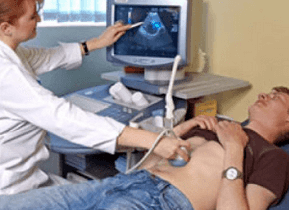
Parasitic infections can be confused with symptoms of completely different diseases.
It is extremely important not to self-medicate, but to seek medical help from an infectious disease specialist or parasitologist. In his arsenal are enough modern methods for diagnosing parasitic infections:
- stool, bile, sputum, blood, urine, rectal and
- preliminary scraping of mucus and substances in the duodenum to detect parasites, their eggs and larvae;
- Ultrasound, X-ray;
- Endoscopy, endoscopy.
The most effective method is considered to be serology - a method of serological analysis for antigens to infection with certain types of helminths.
This study can reveal the presence of parasites even in the early stages of infection.
Treatment of parasitic infections by folk methods
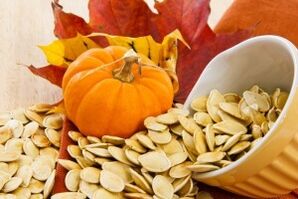
According to the diagnostic results, the doctor prescribed deworming therapy, the duration of the controlled study after the treatment.
All the specialist's recommendations should be followed carefully to avoid complications.
It is not necessary to remind them that observance of preventive hygiene measures will prevent parasitic and secondary infections of family members.
Proponents of the use of folk recipes should remember that the use of these funds is an adjunct and does not replace drug therapy.
Just like medicine, herbal medicine has contraindications and side effects. That's why it's important to discuss these methods with your doctor before using them. Home remedies:
- Take the peeled pumpkin seeds for 2 weeks, keeping the thin green skin over the seeds.
- Decoction of the rind, seeded with 3/4 tbsp. hot water. The remedy is taken on an empty stomach, this must be taken for an hour and a half, dividing the broth into three doses. After a few hours, be sure to stimulate the stool with any laxative.
- It is recommended to perform facial steaming with fresh carrot juice (40 ml) daily for 7 days.
- Regular use of garlic and preparations containing garlic.
- Insert a whole clove of garlic into the rectum (against intestinal worms).
- Receive freshly prepared garlic juice (10-15 ml) with warm milk (1 glass), this mixture should be taken on an empty stomach, the remedy should be repeated 1-2 times a day.
- Infuse 50 g of a mixture of garlic and ground horseradish in half a liter of vodka. The mixture was infused for 1. 5 weeks, filtered. Required dose - 1 tbsp. l. Before each meal, the infusion must be washed. Effective in giardiasis.
- Applying garlic to the liver, taken right before bedtime, is effective against pinworms and tapeworms. Lubricating solution: stir in a cup of water 1 tsp. minced garlic. Conduct regularly during the week.
- A decoction of 2 cloves of garlic, 2 tbsp. milk, 1 tbsp. l. Dried brown flowers are used as an enema. The enema mixture should be boiled for about 10 minutes. Performed 7 times, the effect of the course can be fixed by repeating the course after ten days of rest.
Herbs and charges:
- 1 teaspoon Dried Wormwood pour 400 ml (2 tablespoons) of boiling water, filter and cool, infuse 1-2 tbsp. l. three times a day before each meal. Effective against ascariasis and intestinal worms.
- Tansy (1 tbsp. Dried flowers) and 0. 5 liters of boiling water leave for 3 hours and drink in the form of an enema into the rectum before going to bed. The drug is contraindicated for pregnant women and children.
- Infuse for half an hour from 4 tbsp. l. unripe walnuts and a glass of filtered boiling salted water and taken simultaneously with a laxative. Effective against tapeworms, roundworms, helminths.
- 1 st. l. The flowers are poured 200 ml of boiling water, an hour later filtered to get the infusion. Admission frequency is standard - Art. l. 20 minutes before a meal. So you need to treat for 2-3 days, finish the infusion of laxatives.
- The decoction of 1 kg of fenugreek and 1 liter of water boil for 2 hours (it is better to boil the water bath), filter, and add a few teaspoons of sugar. The volume of the final product is 1 glass of broth, it must be taken 1-2 sips a day before meals.
- Helminthiases are complex infections with a multicomponent clinical picture. They can cause serious complications, causing irreversible harm to human health.
Self-medication in the presence of a parasitic infection is unacceptable. Folk recipes should be used with extreme caution, only as an adjunct to medication.






































